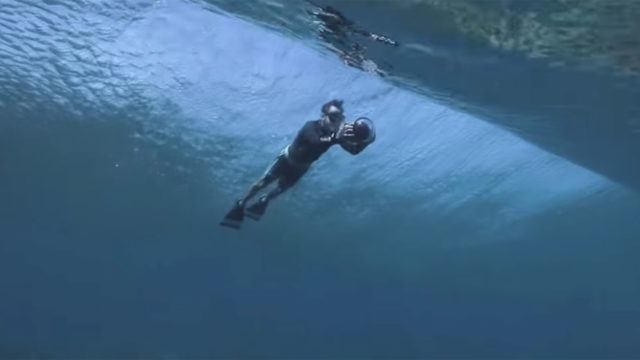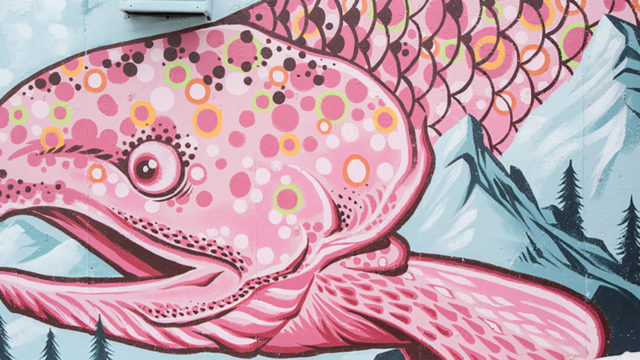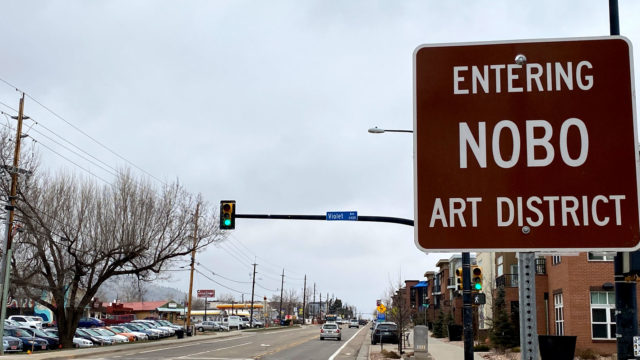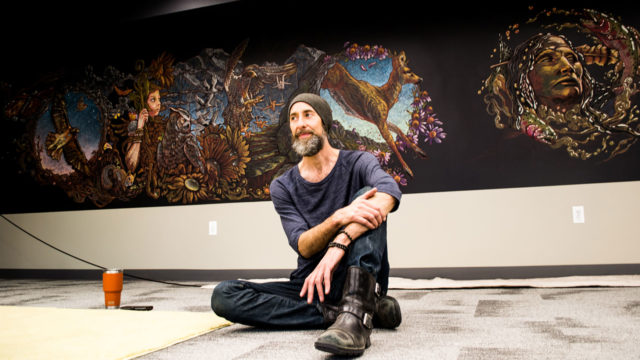Editor’s note: As BLDRfly heads into its art issue this March, we uncover what’s going on across the board in the art landscape, specifically focusing on the visual arts. First up, we identify the key issues blocking the art scene’s success. See all of our arts coverage for the issue here.
Boulder has always attracted creators, but it lacks the vibrant art scene we might expect given the dynamic landscape and lively business scene.
Thriving art scenes such as those in cities like L.A., New York, and Philadelphia — to name a few — flourish when local artists can maintain steady practices, have access to a steady stream of studio and commercial spaces hosting a living pulse of events and meetups, resources to connect and collaborate, and consistently provide galleries from local to international with fresh and thought-provoking work while patrons eat it up through steady sales, commissions + connections.
The dampened Boulder art scene has some obvious culprits, chief among them the city’s extremely high housing costs, which makes it unavailable to the many artists who sacrifice money for creation. Great art — and great art scenes — occur on that razor’s edge of inspiration, desperation, commitment and sacrifice. It also requires patrons, those who believe in the arts and artists.
But appearances may be deceiving; artists are here, whether we recognize a scene or not. Boulder has the nation’s third highest concentration of artists, coming up right behind LA and Santa Fe, and artists constitute about 3.5 percent of the city’s workforce, according to the 2019 Census of Boulder Arts, put together by the City of Boulder Office of Arts + Culture.
As we dive into the Boulder art scene in this month’s BLDRfly issue, we will explore these issues and hopefully clarify the conversation around the arts here, specifically around the visual arts but including others, and how they can be even more dynamic.
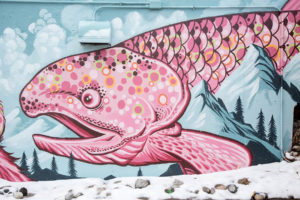
Art in Boulder
Approximately 4,500 professional artists live in the City of Boulder, according to the Census of Boulder Artists, but its art character has not always been clear, and it still isn’t. While many identify as artists, for the purposes of the census, the Office of Arts + Culture defines “practicing, professional artists” as “those that earn a portion of their income from art and report those earnings to income tax filings.”
The city’s First Fridays, while a great way to see what’s going on in the community and the one night a month when all the galleries throw open their doors, by nature take place the same night that other places like Louisville and Denver hold their First Fridays too.
Not only do Boulderites face the challenge of an understandable lack of knowledge in regards to where to go unless they carefully frequent websites that detail maps of events and galleries, such as the NOBO Art District, but these other city’s events draws a lot of competition for art-goers time.
And then, even in the NOBO art district, the only officially recognized city art district, many of the galleries live in warehouse buildings a ways off from the main stretch with no distinct lighting or signage pointing the way. Pockets and clusters certainly exist, but unless you’re on the “in,” it can be hard to know where to go.
Making a Scene
Along with making time for artists to connect formally at each other’s events, Boulder also lacks a framework for creators to connect in more casual settings such as coming together in each other studios for critiques, discussions, sharing about their techniques and cross-pollinating ideas. Everyone wants to feel part of a larger conversation.
However, limits (whether hours or funds) cap the amount of energy they can give, perhaps prioritizing hermitting in their studios or spending solitary hours on their work in other ways. The hard part becomes balancing one’s studio practice with a larger, community practice.
The City of Boulder’s Boulder Office of Arts + Culture division held a forum last Wednesday to discuss these and other issues. Artists and filmmakers, musicians, artistic directors, representatives of organizations like Boulder Open Studios and BMoCA, and even some real estate professionals gathered in Galvanize’s glass event space to discuss the state of Boulder’s art landscape and what it would take to make a real scene.
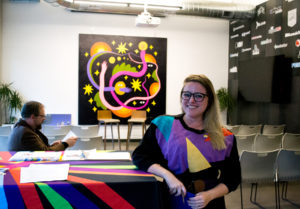
Led by hosts Lauren Click and Matt Chasansky, the general consensus stood out that the three most lacking things are a place, a time, and a group.
Lots of infrastructure for funding and detailing these happenings via cultural calendars exist, but there also seems to exist a disconnect between what’s happening and the general public. Unless you’re plugged in, you can easily miss the channel. The greater issue also involves a proper formula of artist income, housing cost, and art patronage, and on top of that the need for a proper space for all of this dialogue to unite and unfold together takes the cake.
Along with a more staggered arts calendar, attendants of the artist forum expressed the need for coming together in a more raw environment — not just on formal events but in casual settings like opening up studios to each other for informal critique, talking about our techniques and ideas, and even fun happenings like a 24-hour art event or adult coloring session where people come together for fun to create.
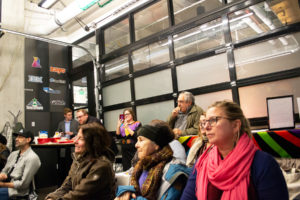
Got after-party?
In regards to a meeting place missing in the arts fabric, such a need comes down to specifically having a place to go after hours where artists and performers and can unwind and chat about the shows.
Even getting out of a show at the bustling Dairy Arts Center lacks a place to go afterward, with the bar closing at 9 p.m. and performers resorting to BJ’s Restaurant and Brewhouse (on 28th Street) to unwind.
“It’s not the sexiest place in the world to hang out [BJ’s],” laughed Amanda Berg Wilson, artistic director of The Catamounts, boundary pushing theater that stages immersive performances such as punk opera Shockheaded Peter, playing at the Dairy in three sold-out sessions. “But at least there’s lots of options!” she joked.

Header Image: Rather Severe works on a wall for Conscious Bay Company through mural consultancy And Art Space. Image: Ladd Forde.


